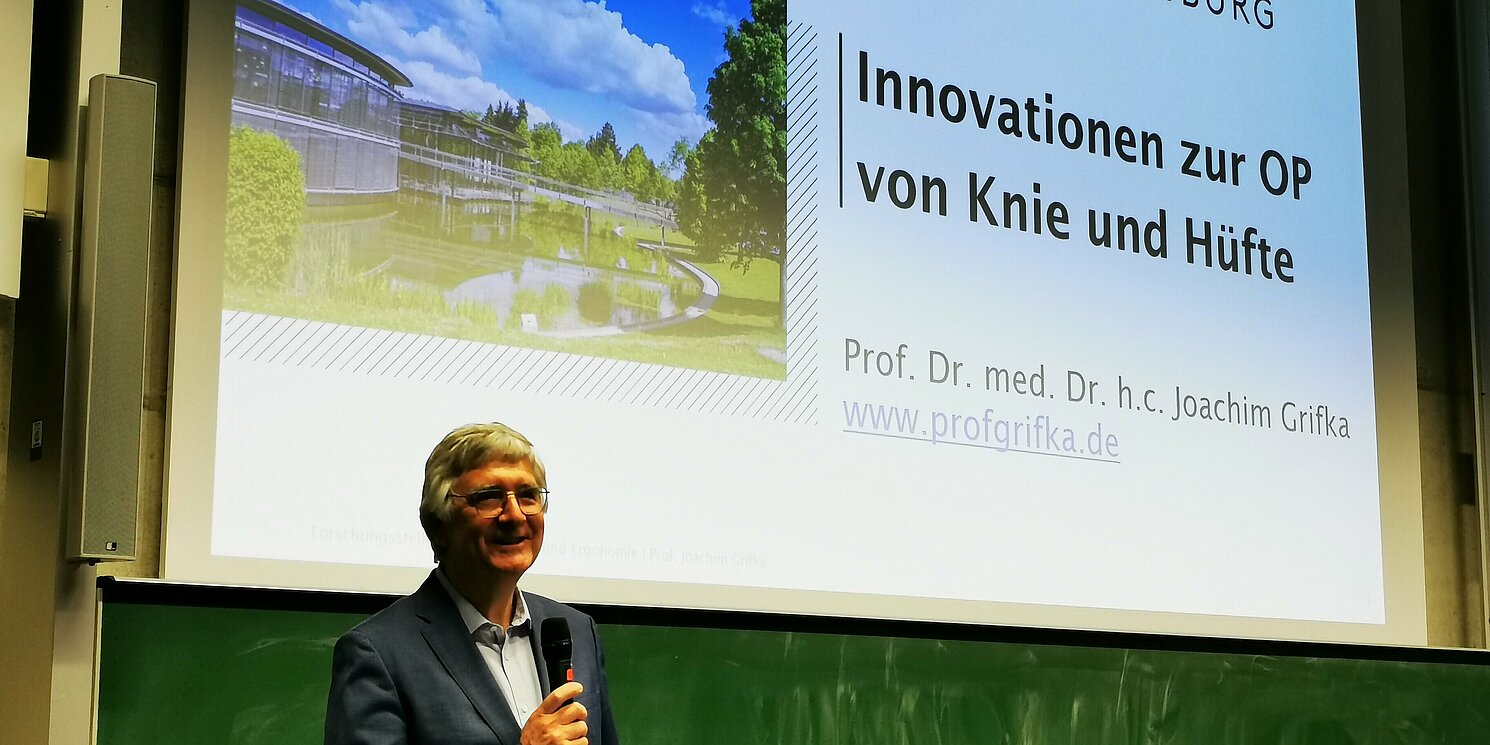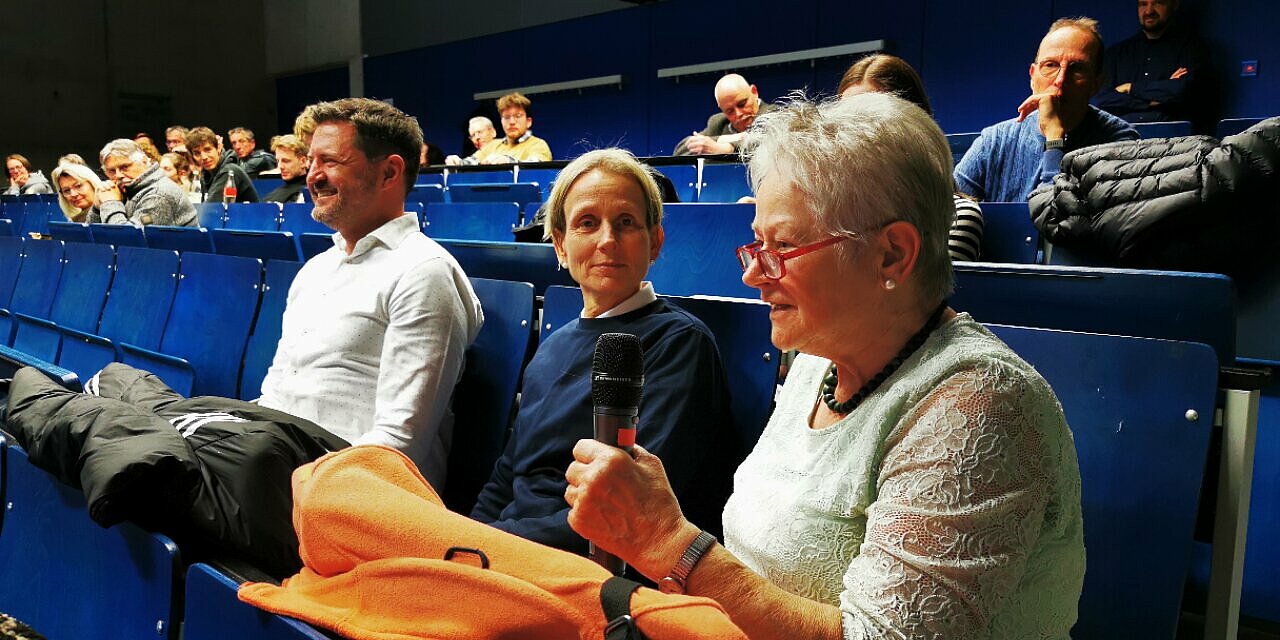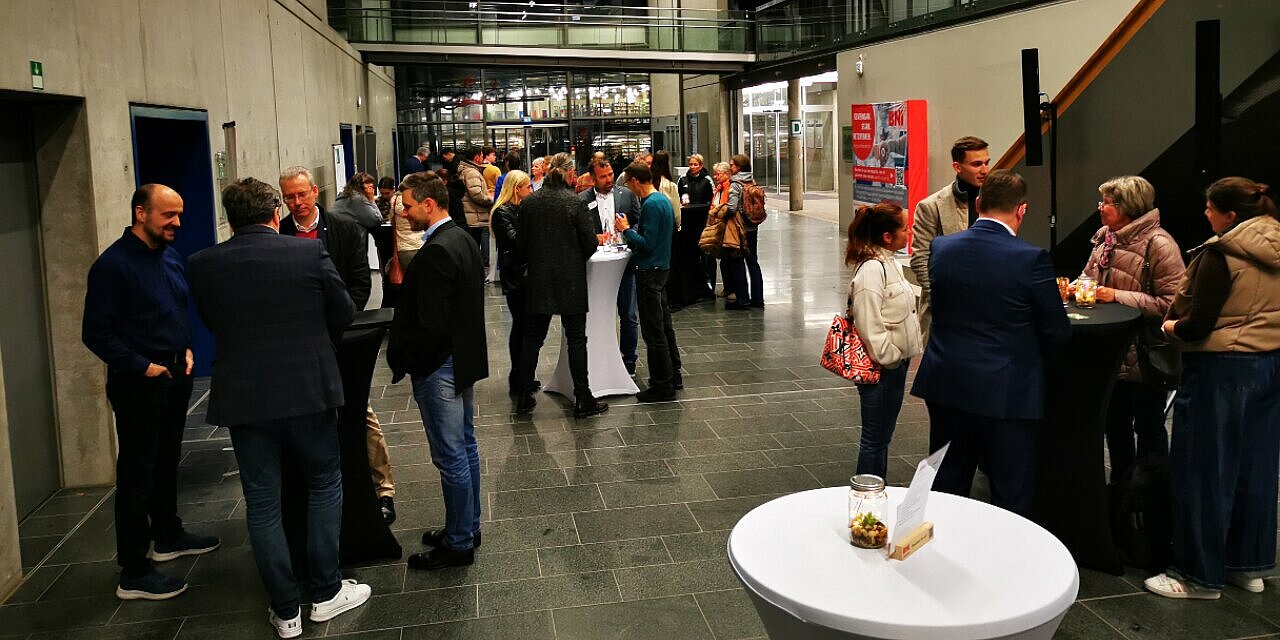Numerous experts from the fields of physiotherapy, rehabilitation, patients and doctors attended an exciting lecture on prehabilitation at OTH Regensburg on 1 April. The speaker, Prof Joachim Grifka, heads the Research Centre for Orthopaedics and Ergonomics at OTH Regensburg, where he and his team conduct research on various topics.
In Germany, around nine million people are affected by osteoarthritis requiring treatment, particularly in the hips and knees. Prof Grifka emphasised the importance of first exhausting all conservative treatment methods. The lecture provided valuable insights into innovative fat stem cell transplantation as a therapy to counteract prosthesis surgery.
Advance information promotes a speedy recovery
If an artificial joint is unavoidable, Prof Grifka relies on targeted preparation. In a world where we prepare for all sorts of things - be it a new job, an exam or a trip - it is often overlooked that the path to surgery also requires thorough preparation. Many people go into surgery without sufficient knowledge and face unexpected challenges afterwards. The lecture illustrated how important it is to provide patients with the right information and behavioural measures before the operation in order to promote a speedy recovery. Together with physiotherapist and competitive athlete Josef Maurer and Dr Ralph Paloncy from the Centre for Outpatient Rehabilitation (ZAR) in Regensburg, Prof. Grifka has developed a sophisticated prehabilitation concept with training exercises and targeted preparatory measures.
This dedicated prehabilitation programme is an important further development for the so-called fast-track procedure. In this surgical technique, Prof Grifka pushes the muscles apart with his fingers instead of cutting them as is usually done. Cutting the muscles leads to bleeding and pain and takes time to heal, sometimes with scarring and weakness of the muscles.
Patients do not require a general anaesthetic, but are given a partial anaesthetic of the affected leg and sleep during the operation. Prof. Grifka also uses local anaesthesia at depth and a haemostatic agent. The patient can get up and go to the toilet independently just two to three hours after the operation. Inconveniences such as a bedpan and helplessness are avoided. This approach also benefits older patients, as they are mobile again more quickly.
Lively exchange at interdisciplinary networking session
After the presentation, participants had the opportunity to ask questions and discuss with each other. The presentation by a patient who suffered from severe hip pain and a virtually stiffened hip joint for over a year was particularly impressive. Prof Grifka performed her operation in 2021 in a live broadcast in front of a specialist audience. This practical insight not only emphasised the relevance of prehabilitation, but also the positive effects of innovative treatment methods on patients' quality of life.
The second part of the event provided an excellent opportunity for networking. Florian Fundeis from the Business Network International (BNI) Eastern Bavaria led the networking session. Professionals from various disciplines and patients had the opportunity to exchange ideas, discuss new ideas and establish potential collaborations. This type of networking is crucial in order to continuously improve patient care and promote innovative approaches in prehabilitation.


